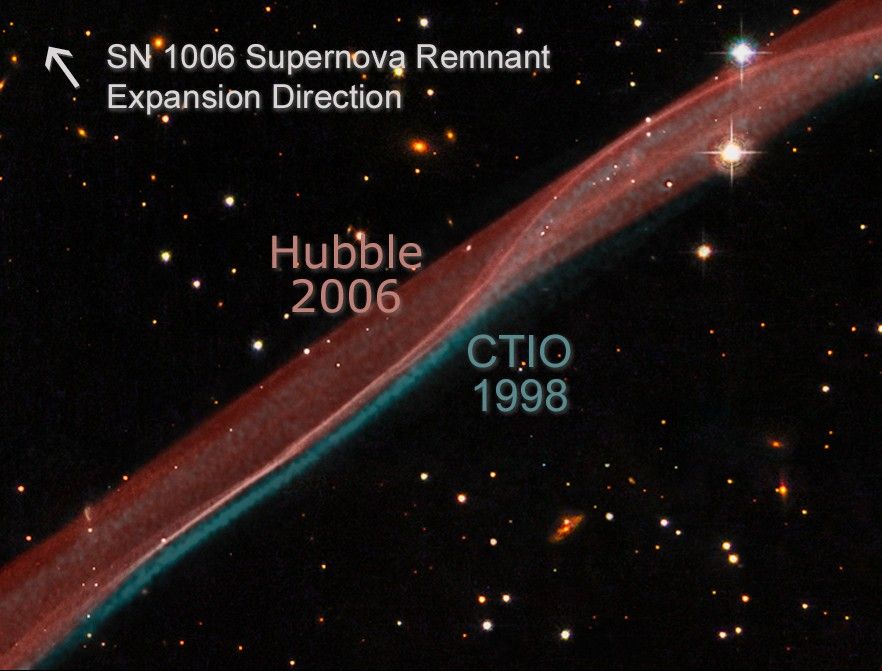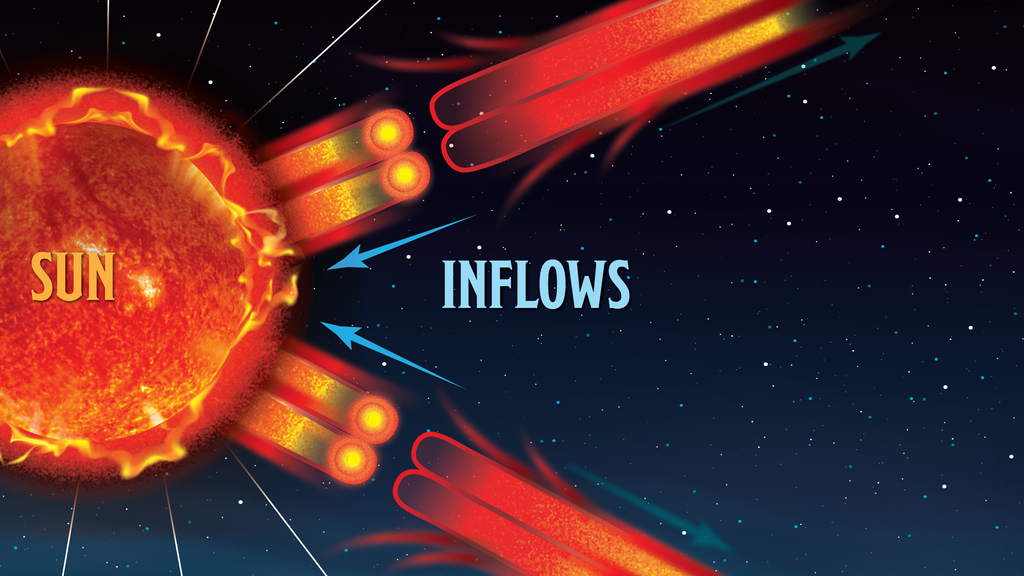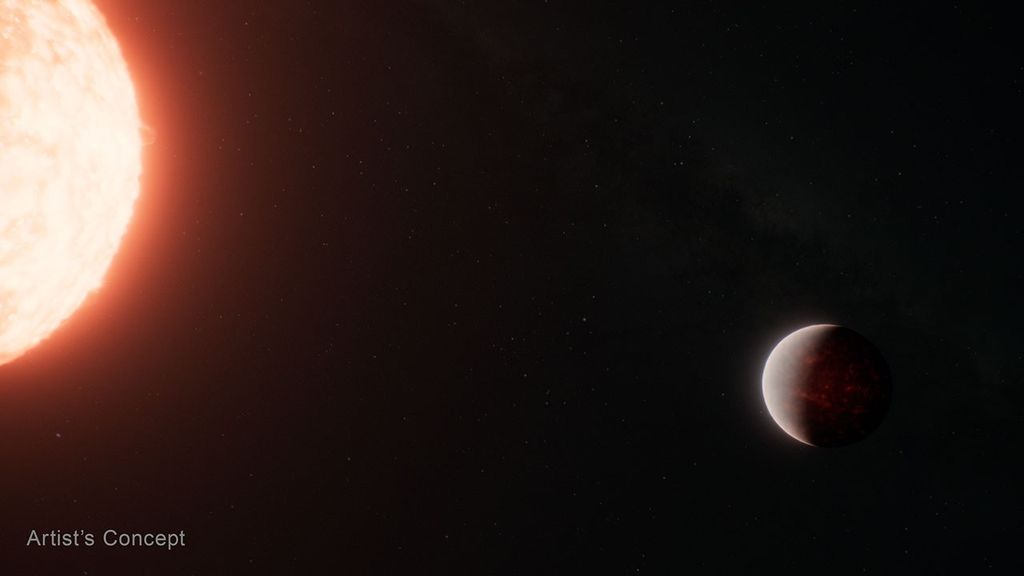1 min read
SN 1006 Supernova Remnant (Hubble)

A delicate ribbon of gas floats eerily in our galaxy. A contrail from an alien spaceship? A jet from a black-hole? Actually this image, taken by NASA's Hubble Space Telescope, is a very thin section of a supernova remnant caused by a stellar explosion that occurred more than 1,000 years ago.
On or around May 1, 1006 A.D., observers from Africa to Europe to the Far East witnessed and recorded the arrival of light from what is now called SN 1006, a tremendous supernova explosion caused by the final death throes of a white dwarf star nearly 7,000 light-years away. The supernova was probably the brightest star ever seen by humans, and surpassed Venus as the brightest object in the night time sky, only to be surpassed by the moon. It was visible even during the day for weeks, and remained visible to the naked eye for at least two and a half years before fading away.
It wasn't until the mid-1960s that radio astronomers first detected a nearly circular ring of material at the recorded position of the supernova. The ring was almost 30 arcminutes across, the same angular diameter as the full moon. The size of the remnant implied that the blast wave from the supernova had expanded at nearly 20 million miles per hour over the nearly 1,000 years since the explosion occurred.
In 1976, the first detection of exceedingly faint optical emission of the supernova remnant was reported, but only for a filament located on the northwest edge of the radio ring. A tiny portion of this filament is revealed in detail by the Hubble observation. The twisting ribbon of light seen by Hubble corresponds to locations where the expanding blast wave from the supernova is now sweeping into very tenuous surrounding gas.
The hydrogen gas heated by this fast shock wave emits radiation in visible light. Hence, the optical emission provides astronomers with a detailed "snapshot" of the actual position and geometry of the shock front at any given time. Bright edges within the ribbon correspond to places where the shock wave is seen exactly edge on to our line of sight.
Today we know that SN 1006 has a diameter of nearly 60 light-years, and it is still expanding at roughly 6 million miles per hour. Even at this tremendous speed, however, it takes observations typically separated by years to see significant outward motion of the shock wave against the grid of background stars. In the Hubble image as displayed, the supernova would have occurred far off the lower right corner of the image, and the motion would be toward the upper left.
SN 1006 resides within our Milky Way Galaxy. Located more than 14 degrees off the plane of the galaxy's disk, there is relatively little confusion with other foreground and background objects in the field when trying to study this object. In the Hubble image, many background galaxies (orange extended objects) far off in the distant universe can be seen dotting the image. Most of the white dots are foreground or background stars in our Milky Way galaxy.
This image is a composite of hydrogen-light observations taken with Hubble's Advanced Camera for Surveys in February 2006 and Wide Field Planetary Camera 2 observations in blue, yellow-green, and near-infrared light taken in April 2008. The supernova remnant, visible only in the hydrogen-light filter was assigned a red hue in the Heritage color image.
About the Object
- R.A. PositionR.A. PositionRight ascension – analogous to longitude – is one component of an object's position.15h 2m 48.39s
- Dec. PositionDec. PositionDeclination – analogous to latitude – is one component of an object's position.-41° 54' 42.0"
- ConstellationConstellationOne of 88 recognized regions of the celestial sphere in which the object appears.Lupus
- DistanceDistanceThe physical distance from Earth to the astronomical object. Distances within our solar system are usually measured in Astronomical Units (AU). Distances between stars are usually measured in light-years. Interstellar distances can also be measured in parsecs.6,850 light-years or 2,100 parsecs
- DimensionsDimensionsThe physical size of the object or the apparent angle it subtends on the sky.The image is approximately 2.5 arcminutes (5 light-years or 1.5 parsecs) wide.
About the Data
- Data DescriptionData DescriptionProposal: A description of the observations, their scientific justification, and the links to the data available in the science archive.
Science Team: The astronomers who planned the observations and analyzed the data. "PI" refers to the Principal Investigator.HST Proposal: 10577 J. Raymond (Harvard- Smithsonian Center for Astrophysics), W. Blair (Johns Hopkins University), R. Sankrit (University of California, Berkeley), K. Korreck (Harvard-Smithsonian Center for Astrophysics), and P. Ghavamian (STScI) and 11017: K. Noll, H. Bond, C. Christian, L. Frattare, F. Hamilton, Z. Levay, M. Mutchler, and W. Januszewski (Hubble Heritage Team/STScI) and W. Blair (Johns Hopkins University). - InstrumentInstrumentThe science instrument used to produce the data.HST>ACS/WFC and HST>WFPC2
- Exposure DatesExposure DatesThe date(s) that the telescope made its observations and the total exposure time.February 2006 and April 2008, Exposure Time: 7.5 hour
- FiltersFiltersThe camera filters that were used in the science observations.WFPC2: F439W (B), F555W (V), and F814W (I) ACS: F658 N (H-alpha+[N II])
- Object NameObject NameA name or catalog number that astronomers use to identify an astronomical object.SN 1006, SNR 327.6+14.6
- Object DescriptionObject DescriptionThe type of astronomical object.Remnant from 1006 A.D. Supernova Event
- Release DateJuly 1, 2008
- Science ReleaseHubble Sees Stars and a Stripe in Celestial Fireworks
- CreditNASA, ESA, and the Hubble Heritage Team (STScI/AURA); Acknowledgment: W. Blair (Johns Hopkins University)

This image combines several exposures in both ACS and WFPC2. The ACS images were exposed through a filter transmitting the light of hydrogen, and the WFPC2 images were made through three filters transmitting wide bands of color in the red and near infrared, yellow- green, and blue portions of the spectrum. In the color composite, the ACS image is shown in red, the WFPC2 red/IR filter images are shown in red-orange, yellow-green filter images in green, and blue filter images in blue-violet. Blue: F439W (B) Green: F555W (V) Red: F658 N (H-alpha+[N II]) + F814W (I)

Related Images & Videos

Full-shell Image of SN 1006 Showing Location of Hubble Observations
This image is a composite of visible (or optical), radio, and X-ray data of the full shell of the supernova remnant from SN 1006. The radio data show much of the extent that the X-ray image shows. In contrast, only a small linear filament in the northwest corner of the shell is...

SN 1006 Supernova Remnant Expansion Comparison
Comparison of visible hydrogen emission in the NW filament of SN 1006 in data taken at the CTIO 0.9m telescope (H-alpha, continuum-subtracted; Winkler, et al.) in 1998 (shown in green), and the Hubble ACS data (Raymond et. al) in 2006 (shown in red). The stellar background is...
Share
Details
Claire Andreoli
NASA’s Goddard Space Flight Center
Greenbelt, Maryland
claire.andreoli@nasa.gov





























